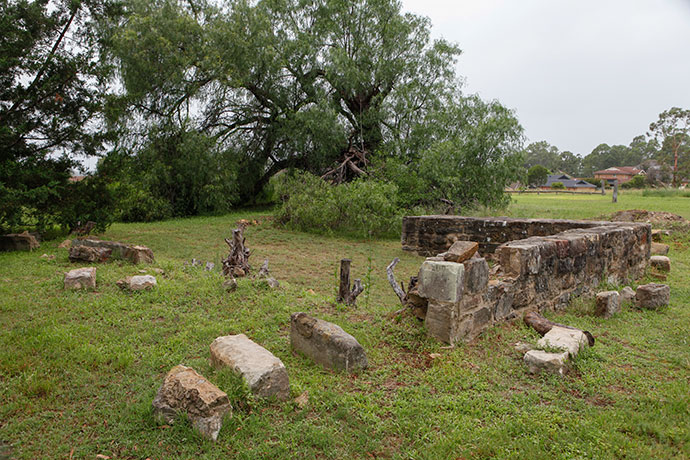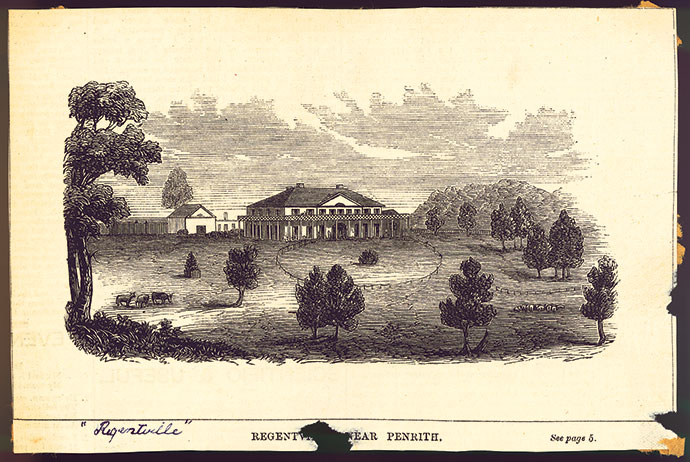In the early 1800s, right in the middle of the suburb now known as Regentville, sat an enormous mansion that would still be considered grand even in life today.
But the history of the Regentville mansion is shrouded by mystery as events that led to its demise raised questions that have never been answered.
During the years of settlement in NSW, Sir John Jamison acquired 9,000 acres of land in the Penrith area following the 1811 death of his father, Thomas Jamison, a member of the First Fleet.
Jamison lived in a cottage by the Nepean River until he commissioned the building of a grand house, to be called Regentville, of which the foundation stone was laid on September 9, 1823.
Built using stone and materials from nearby, Regentville was finished the following year.
With 15 rooms, including a breakfast room, a billiard room and a library as well as a grand entrance hall, the mansion quickly gained a reputation as being one of the finest houses in NSW at the time.
In addition to the house, the grounds stretched over acres and there were a number of other structures, including stables, a bake house, kitchens and a mill.
Among these buildings were quarters for the workers and labourers, one of which was a young Sir Henry Parkes.
There was a vineyard and groves of fruit trees and the land was also used to farm sheep and cattle. In addition to holding a reputation as one of the grandest houses in the state, it was also known for the extravagant parties held by Jamison.
In 1840, however, there was a depression and Jamison was hit hard.
He died at Regentville in 1844, aged 68.
From here, the mansion fell into disrepair and was empty for years until it was picked up for use as a mental asylum run by a Gladesville doctor.
The quiet surroundings were expected to assist in the recovery of patients but the subsequent remoteness of the site meant that those who could afford treatment elsewhere elected to leave.
The house again was left empty when the endeavour failed. In 1865 the house and its grounds were leased by the Shiels family, who ran a private hotel.
After a few years, the owner looking to end the lease was selling Regentville’s furniture when the mansion caught fire
The details of what happened on the night of the fire in May 1869 were recorded during an inquest into the incident.

There were only two maids in the house at the time of the fire, who were woken by the sound of crackling and rushed to the ballroom, where they saw the flames.
The occupants of the house and those living on the grounds watched as the house was destroyed and many said that they could not see how the roof could have caught alight naturally.
It was concluded in the inquest that “the house was wilfully and maliciously set on fire by some person or persons unknown”.
While it was a great loss to Penrith that the mansion burned down, parts of this history are literally distributed all over Penrith.
When the mansion was reduced to rubble by fire, bits of the sandstone walls were salvaged and used in the building of Penrith’s roads and buildings.
The guttering on Station Street and Belmore Street was originally made from this sandstone, and the stone still lies in the walls of the Red Cow Hotel.
The site where the house sat still exists, though at one point was threatened by the development of Glenmore Park.
As for the fire, the case was never solved, meaning it remains one of Penrith’s longest-running mysteries.

